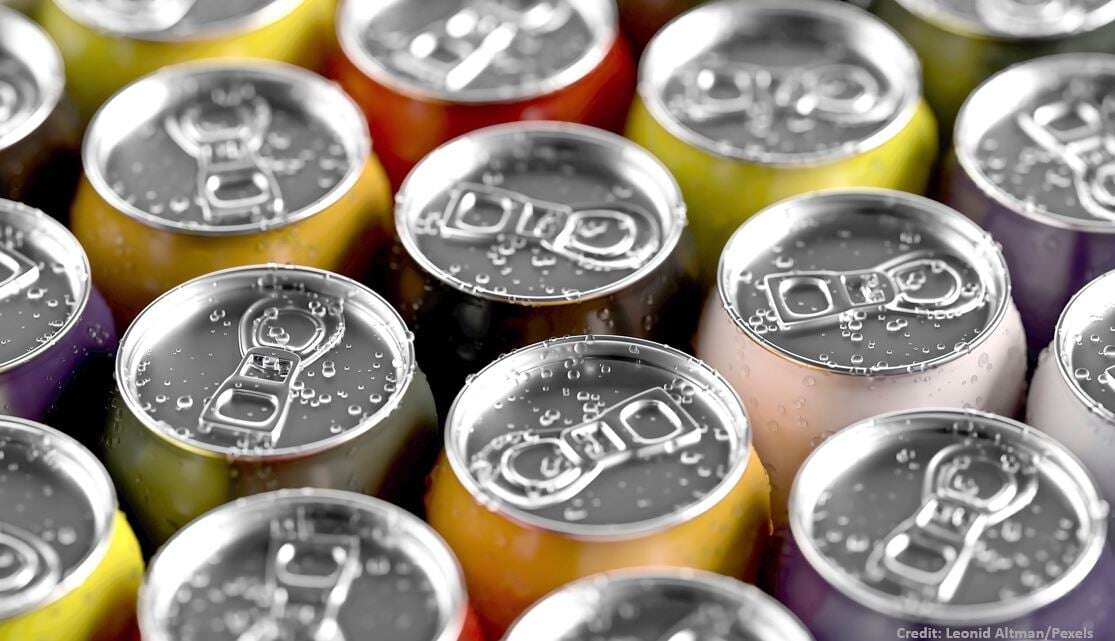5 min read
Bisphenol A Ban by the Back Door: The 21st Century Way
 Jane Denny
:
Jul 25, 2023 12:00:00 AM
Jane Denny
:
Jul 25, 2023 12:00:00 AM

Despite being a key component of epoxy resins and polycarbonates, and an additive that makes unsaturated polyester resins stronger and resistant to impact and heat, bisphenol’s use is becoming increasingly restricted. In spite of its benefits as a starter material and additive, it is becoming increasingly excluded from certain applications.
Bisphenol A (BPA) is derived by combining acetone and phenol in the presence of an acid catalyst. Worldwide production capacity is currently well over 10,000 kilotons per annum. Most is produced in China, followed by Europe and the US. And the amount being produced by the world’s top producers – Covestro, Wanhua and Hainan Huasheng – is growing.
First commercialised in the 1950s, the compound came under the scrutiny of health investigators about 15 years ago. Considered a potential endocrine disruptor in humans and a hormone disruptor in wildlife, an array of legalities – if not certainties regarding its presumed dangers – govern its use and sale worldwide.
Until fairly recently, BPA-based thermal paper was used in the till receipts commonly issued at retail stores. It was used to facilitate the heat-activated process for printing them.
Polycarbonate plastic, being transparent and sterilisable, seemed an ideal material for babies’ feeding bottles. The realisation that the bond between plastic and BPA breaks under the action of heat made this use problematic.
"...BPA replacements in printed till receipts continue to raise safety questions..."
Tecnon OrbiChem
And yet in both these cases, BPA replacements – and other chemical components – continue to raise safety questions.
One application in which BPA has prevailed is for coating the inside of food and beverage cans. Designed to prevent the can contents and metal making contact, this application is coming under increasing criticism by lobbyists worldwide.
Bisphenol A: Recent Moves
In April 2023, the European Food Safety Authority downgraded BPA’s tolerable daily intake – the amount of a substance considered safe to consume every day over a lifetime. Last set in 2015 at 0.004 microgram (4 millionths of a gram) per body weight kilogram per day, it is now 20,000 times lower.
In California in 2022, the discovery of BPA in socks led to court action and financial settlements including with licensed apparel producer Mad Engine. The state’s Centre for Environmental Health found over 100 sock brands – largely comprising polyester and spandex – contained BPA. A number of companies agreed to reformulate products with a BPA alternative.
A Compliance Conundrum
Online retailer Amazon’s restricted substances list includes the chemical bisphenol A – along with phthalates and formaldehyde. The classifications differ, however, depending on geography. ‘Products containing Bisphenol A (BPA)’ are referenced in amazon.com’s prohibited listings. That means they cannot be sold via the US platform.
The brand’s UK and European portals prohibit ‘products intended to come into contact with foodstuffs (including products in contact with babies and infants’ mouths) containing BPA’. To sell in particular geographies, Amazon must adhere to regional regulations. BPA however, is not restricted by US federal regulation yet Amazon instigates a blanket ban on its presence in the US marketplace. These factors help lobby groups grow increasingly vocal on BPA’s potential impact on human health.
EU legislators also this year terminated a multi-year campaign by the trade association PlasticsEurope to prevent BPA’s classification as a substance of very high concern under Reach regulation. The Court of Justice ruling reinforces the European Chemicals Agency’s statutory obligation to regulate, and authorise in certain applications, use.
The capacity of BPA to harm human and animal life, and its reliance on finite fossil resources, underpins significant interest in safer and more sustainable alternatives.
Leftfield Innovation
A research team from Spain’s Institute of Materials Science of Seville and La Mayora Institute of Subtropical and Mediterranean Horticulture are approaching the issue uniquely using residues and leftovers from sauce and juice production processes – known as pomace – dried in the sun or an oven.
The team found that mixing the powdery substance with caustic soda – before reheating to remove the caustic soda – produces a waxy compound, or lipid. Further treatment led to the development of a polymerised lacquer coating. Coated aluminium failed to oxidise after 170 hours immersed in salty water, according to the team.
BPA-free 'can' be done
US-based paints and coatings manufacturer Sherwin-Williams and PPG Packaging Coatings offer non-BPA epoxy can coating technology based on acrylic products. And Japan’s Toyochem chemicals company markets a coating that does not ‘intentionally contain BPA’. Instead, the firm’s products rely on either acrylic emulsion or polyester resin to form the barrier.
In fact, it is almost 20 years since the US Department of Energy identified sorbitol and levulinic acid as among the top 12 building-block chemicals that could be produced from renewable feedstocks.
Today, France’s Roquette successfully markets a biobased biodegradable BPA alternative designated Polysorb. An isosorbide, it is obtained via the dehydration of the sugar alcohol sorbitol. The largest-volume sugar alcohol, sorbitol is mainly derived from potato starch, but also naturally-occurring in fruit including apples and berries.
And Mitsubishi Chemical Corporation includes a plant-based BPA-free polycarbonate within its engineering plastics portfolio. Like Roquette’s BPA alternative, Mitsubishi’s polycarbonate Durabio is derived mainly from isosorbide. A target market for the product is automotive housings, with Mitsubishi claiming enhanced UV-resistance and transparency.
What is sorbitol?
- Sorbitol is a type of carbohydrate called a sugar alcohol, and a polyol
- Water-soluble, it occurs naturally in fruits and berries but can also be produced synthetically from glucose
- It is a lignocellulosic biomass-derived platform chemical
- Essentially, the point above means it comes from plants and is a raw material that can become a value added chemical
What is levulinic acid?
- Levulinic acid is a sugar-based cellulose derivative
- It is a raw material for use in applications including resins, plasticisers, textiles, animal feed, coatings and antifreeze
- Levulinic acid is obtained via the dehydration of lignocellulosic biomass
- It is also produced via starch – such as bread – waste catalysis
A Compliance Conundrum
Diphenolic acid (DPA) is a levulinic acid derivative. Levulinic acid is obtained via acid hydrolysis of carbohydrates – including glucose, sucrose and fructose – as well as wood, starch and agricultural wastes. Though proven in scientific literature, no commercial routes to DPA-based epoxy resin exist.
Another French company GFBiochemicals – co-founded by former Arsenal footballer Mathieu Flamini – developed technology to recover and purify levulinic acid. The firm has its sights firmly set on commercialising DPA-based polymers made from biobased feedstocks.
In partnership with Drexel University and Rowan University, the US army has also developed a biobased BPA alternative. It is a furan-based amine and phenolic compound-based product.
Lignin-based Epoxy Resin For Engineered Plastics
A group of companies including Solvay and Westlake are exploring the potential for lignin-based epoxy resins to match the thermo-mechanical properties of fossil-based varieties. European Commission-funded, the multi-company team seeks to commercialise a product to reduce BPA use.
Under the banner Viable – an acronym (of sorts) outlining the collaborative aim, ‘valorisation of lignin biomass into competitive components gradually replacing BPA in the formulation of epoxy resins’, the consortium combines materials and automotive expertise.
It includes – among others – Fiat Chrsyler Automobiles’ research arm Centro Ricerche Fiat in Italy, a French company dedicated to realising a lignocellulosic biorefinery CIMV and Cytec Engineered Materials – a UK company with a 30-year history acquired by Solvay in 2015.
Conclusion
The growth of BPA-free technology and innovation and increasingly anti-BPA sentiment can mean only one thing. Marketplaces and companies will seek alternatives to meet consumer demand for safer and more sustainable products.
Though BPA production output continues to grow in the 2020s, time could well be running out for this fossil fuel-based product.
Tecnon OrbiChem’s team follows phenol, acetone and derivatives market trends globally. We help clients understand the factors influencing the dynamics across the value chain and respond to the industry’s biggest challenges with objective analysis and reliable data. OrbiChem360 provides comprehensive chemical business intelligence to assist business managers in their strategic planning and business performance optimisation.
The one-minute video above outlines the benefits of a subscription to our business intelligence platform OrbiChem360. For a demonstration of how Tecnon OrbiChem's insights into global chemicals markets can inform your business, hit the button below.





